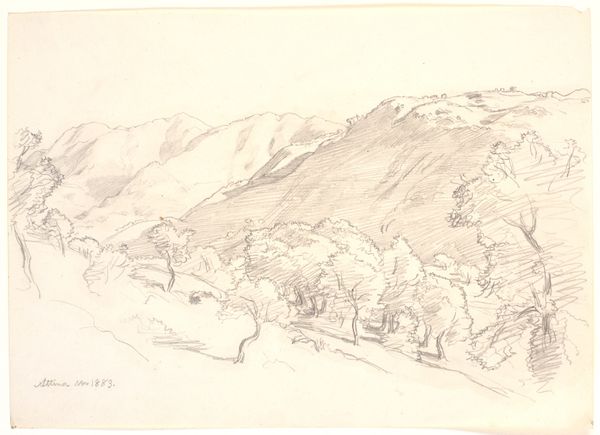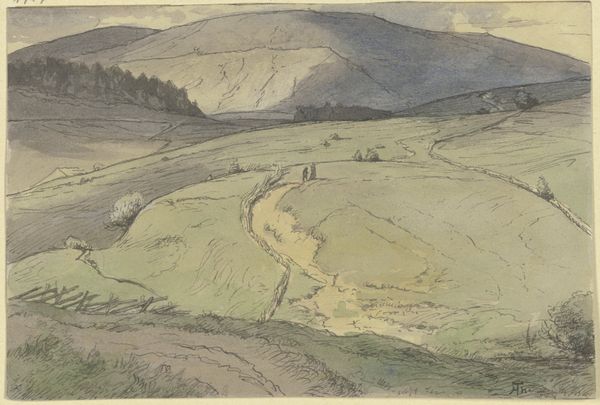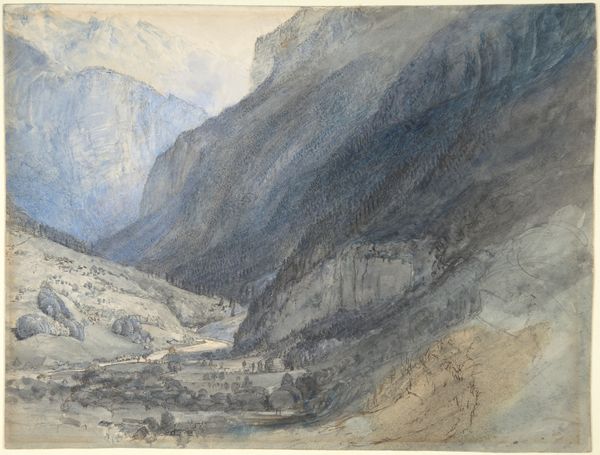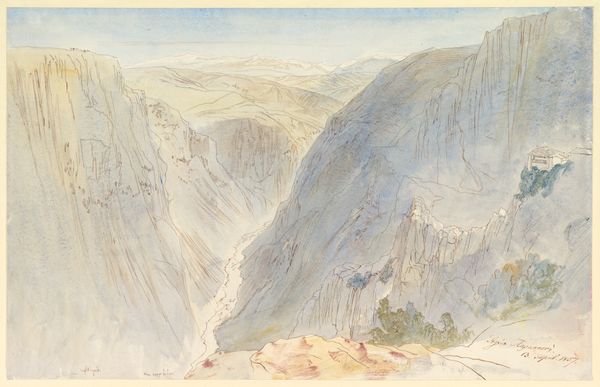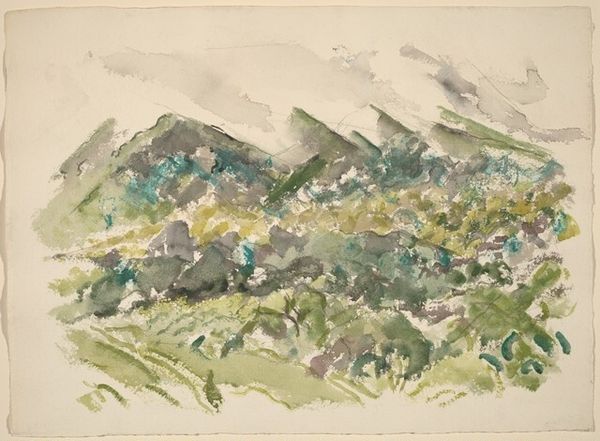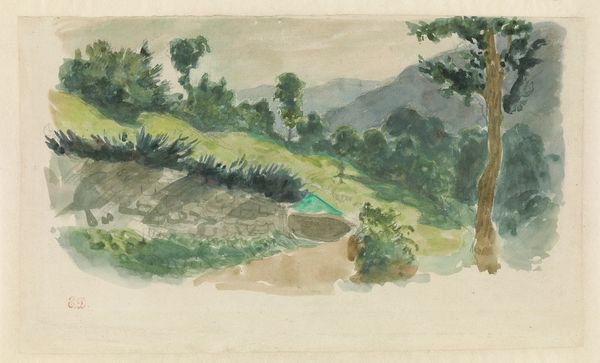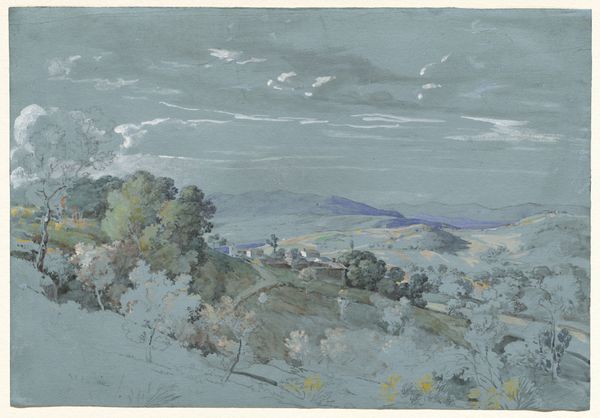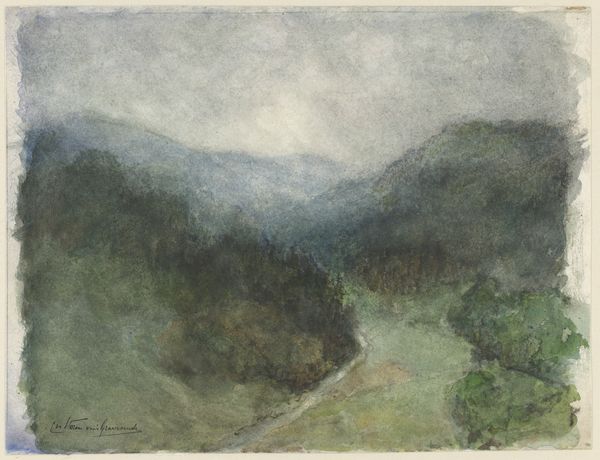
Copyright: Public Domain
Editor: So, here we have "The Earth Pillars by the Schalderer Bach near Vahrn," a watercolor and pencil drawing created in 1878 by Louis Eysen. There's something about the muted colors that gives it this dreamy, almost melancholy mood. What strikes you about this landscape? Curator: It's fascinating how Eysen captured this geological phenomenon, but beyond the purely representational, consider what this image meant to its audience. By the late 19th century, the concept of the sublime was being heavily critiqued. Editor: Critiqued? How so? Curator: Well, previously the "sublime" in art focused on nature's grandeur to evoke awe and, often, divine power. But rapid industrialization was reshaping the landscape and society, creating new political realities. Art increasingly reflected these shifts. Editor: So, where does this artwork fit in? Is it simply documenting a pretty place, or is there more to it? Curator: Think about how accessible such scenes were becoming. Railways and tourism were opening up areas like Vahrn to the public. How does Eysen's perspective, framing of the landscape, and choices of material influence or perhaps democratize the viewing experience, compared to, say, earlier Romantic paintings of similar scenes? Does this perspective challenge established hierarchies between the viewer and the landscape? Editor: That's a good point. The relative small size and the choice of watercolour also contribute to a sense of immediacy, doesn't it? It suggests a personal experience, more like a sketch, something that's more transient than other depictions of the sublime. Curator: Precisely! And what kind of art institutions are developing that want to collect pieces like this, bringing everyday accessible art to the public sphere? The conversation shifts from celebrating a distant, untouchable sublime to engaging with nature in a tangible, even intimate way. Editor: It really makes you think about the changing role of landscape art and the experience it provides, less about being overwhelmed and more about observing. Thanks! Curator: My pleasure. The art is so good in this period of upheaval.
Comments
No comments
Be the first to comment and join the conversation on the ultimate creative platform.

